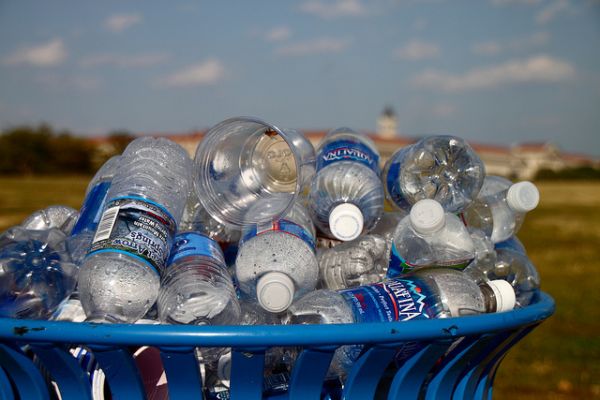
Feature Photo: how can i recycle this | Photo Above: Mr. T in D.C.
Even though National Recycling Week was started in Australia by Planet Ark, it doesn’t mean that we all can’t be more conscious of our waste this week.
Starting with plastic.
As plastic bag bans are starting to pop up around the world, it is becoming quite obvious that people are becoming more aware that plastic isn’t a necessity and isn’t too good for the environment. With all the different types of plastic out there, it can be hard to discern what is recyclable and what is not, so let this guide help you out. Keep in mind that different cities have different recycle rules, so double check before tossing that plastic product into the recycle bin.
#1 PET (polyethelene terephthalate)
PET is the most common plastic and is one of the safest plastics to produce and recycle. It is safe to use, considering that most soda bottles and cleaning solution bottles are made from this type.
PET is the most common plastic and is one of the safest plastics to produce and recycle. It is safe to use, considering that most soda bottles and cleaning solution bottles are made from this type.
#2 HDPE (high-density polyethylene)
Similar to PET, it is a safe plastic that is recyclable and is used to create milk jugs and detergent bottles.
Similar to PET, it is a safe plastic that is recyclable and is used to create milk jugs and detergent bottles.
#3 PVC (polyvinyl chloride)
PVC is not recyclable and production of this plastic releases carcinogenic by-products into the environment. The new car smell that so many people love is the off-gassing of PVC. Great, right? Anything with that distinct smell – shower curtains, rain boots, and other things such as plumbing pipes contain PVC. Take it to a hazardous waste site for disposal.
PVC is not recyclable and production of this plastic releases carcinogenic by-products into the environment. The new car smell that so many people love is the off-gassing of PVC. Great, right? Anything with that distinct smell – shower curtains, rain boots, and other things such as plumbing pipes contain PVC. Take it to a hazardous waste site for disposal.
#4 LDPE (low-density polyethylene)
This is the plastic that you find in the form of clear produce bags at the grocery store, garbage bags, dry cleaning bags, and disposable diapers. It’s pretty easy to recycle, but even better is not using them in the first place. Even if the community recycle center doesn’t recycle the bags, many major grocery stores accept them.
This is the plastic that you find in the form of clear produce bags at the grocery store, garbage bags, dry cleaning bags, and disposable diapers. It’s pretty easy to recycle, but even better is not using them in the first place. Even if the community recycle center doesn’t recycle the bags, many major grocery stores accept them.
#5 PP (polypropylene)
Yogurt containers, syrup bottles, and clothing can contain PP. It can be recycled, but isn’t in all cities, so be sure to check.
Yogurt containers, syrup bottles, and clothing can contain PP. It can be recycled, but isn’t in all cities, so be sure to check.
#6 PS (polystyrene)
Also known as Styrofoam, polystyrene is made into many, many different things – packing products, cups, take-out containers, and more. It can be recycled into building materials, but the pellets that result as it is broken down can be a hazard to birds and marine life. Not to mention that it takes centuries to completely decompose. It is difficult to recycle Styrofoam that has come into contact with food, so it’s better not to use it at all when there is another option available.
Also known as Styrofoam, polystyrene is made into many, many different things – packing products, cups, take-out containers, and more. It can be recycled into building materials, but the pellets that result as it is broken down can be a hazard to birds and marine life. Not to mention that it takes centuries to completely decompose. It is difficult to recycle Styrofoam that has come into contact with food, so it’s better not to use it at all when there is another option available.
#7 Other plastics (including polycarbonate, ABS, PPO/PPE)
These plastics are usually too unstable or brittle to recycle, but are found in everything from toys to Tupperware. While they can’t be recycled, they are compostable under high heat.
These plastics are usually too unstable or brittle to recycle, but are found in everything from toys to Tupperware. While they can’t be recycled, they are compostable under high heat.
Source: Green Made Easy by Chris Prelitz
Community Connection:
If you still don’t think all of our waste is “that big of a deal” check out the World’s Most Offensive Landfills, one of which can be found in the Pacific Ocean.
Read more at http://matadornetwork.com/change/the-recyclers-guide-to-plastic/#5ZD4OKBLjRAVlwk8.99
No comments:
Post a Comment